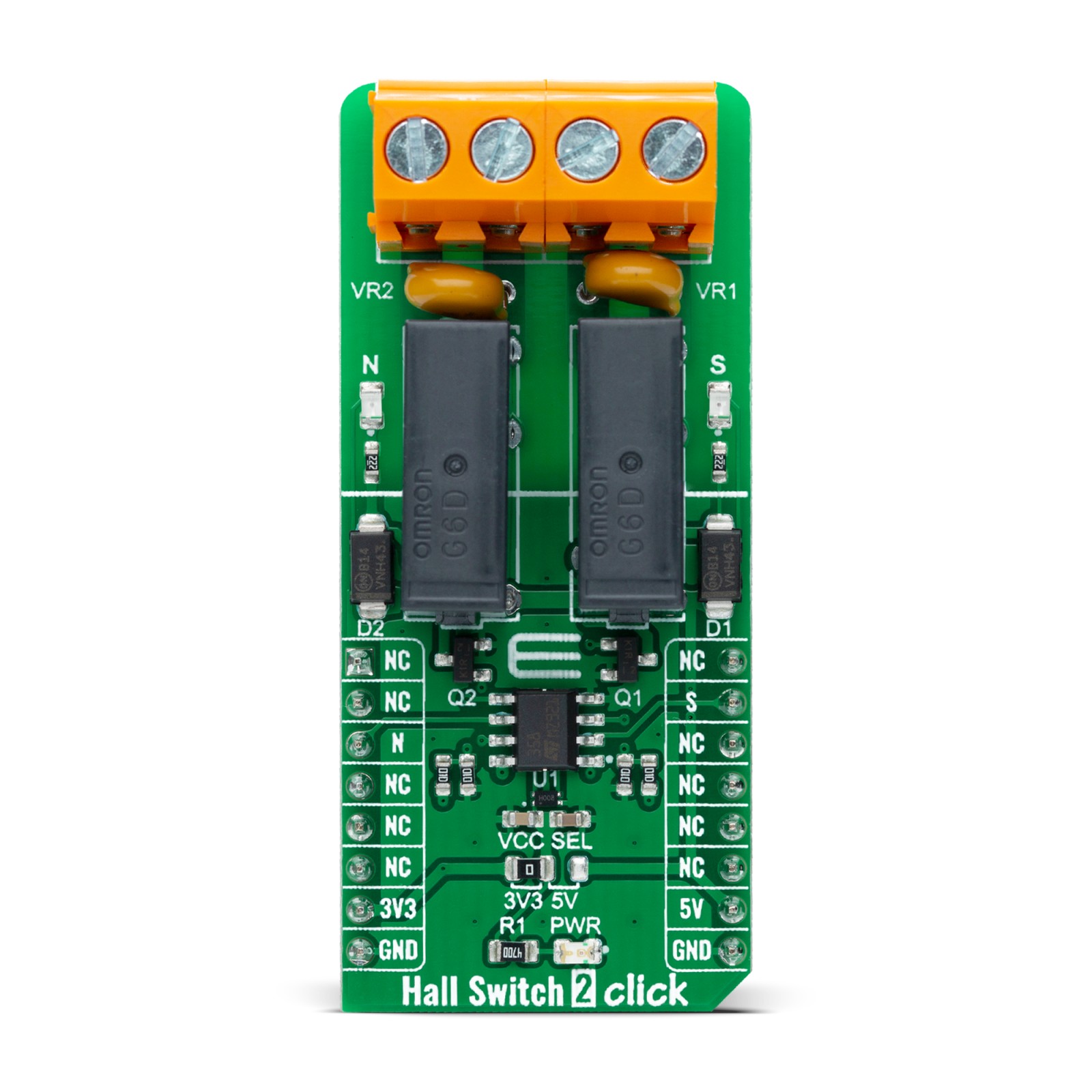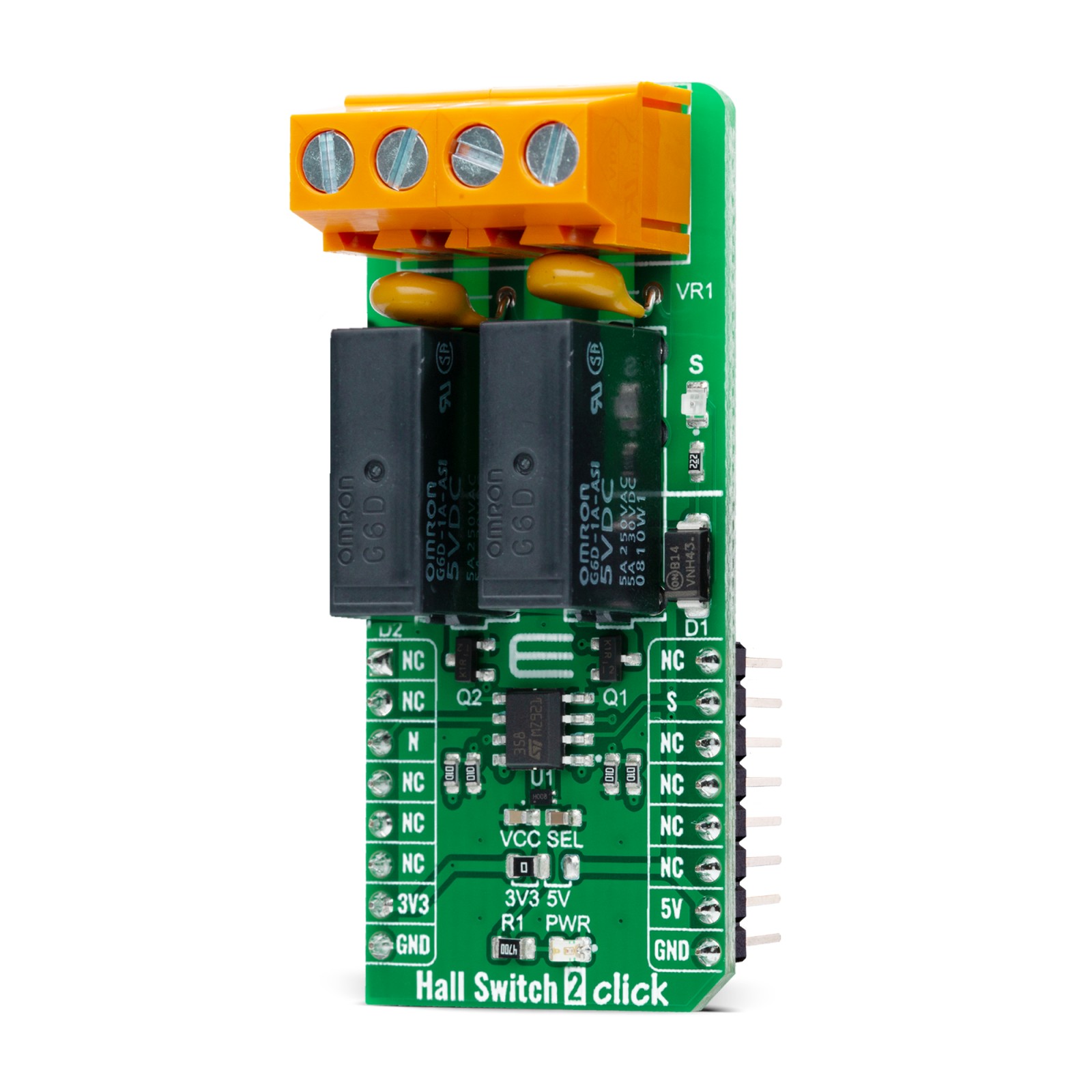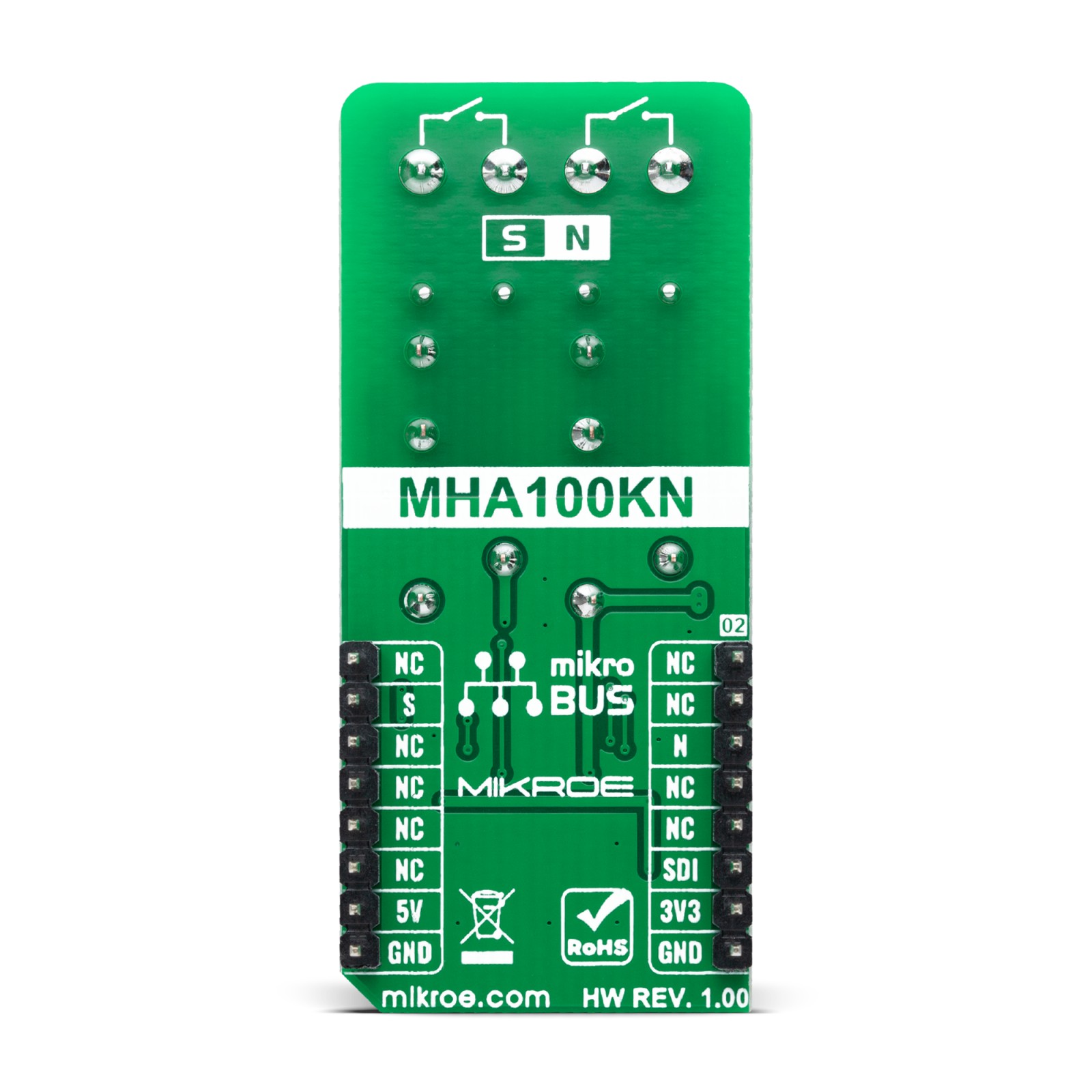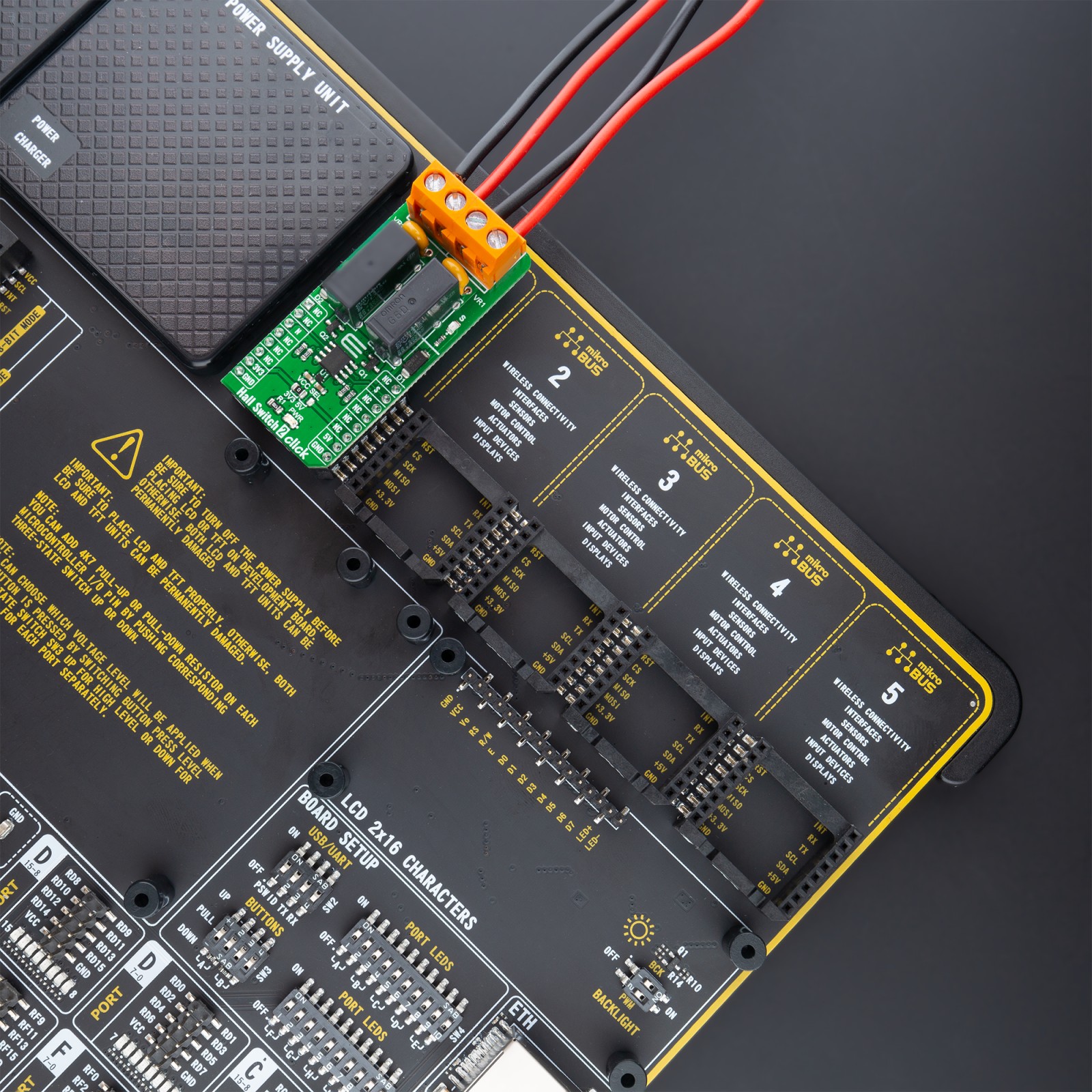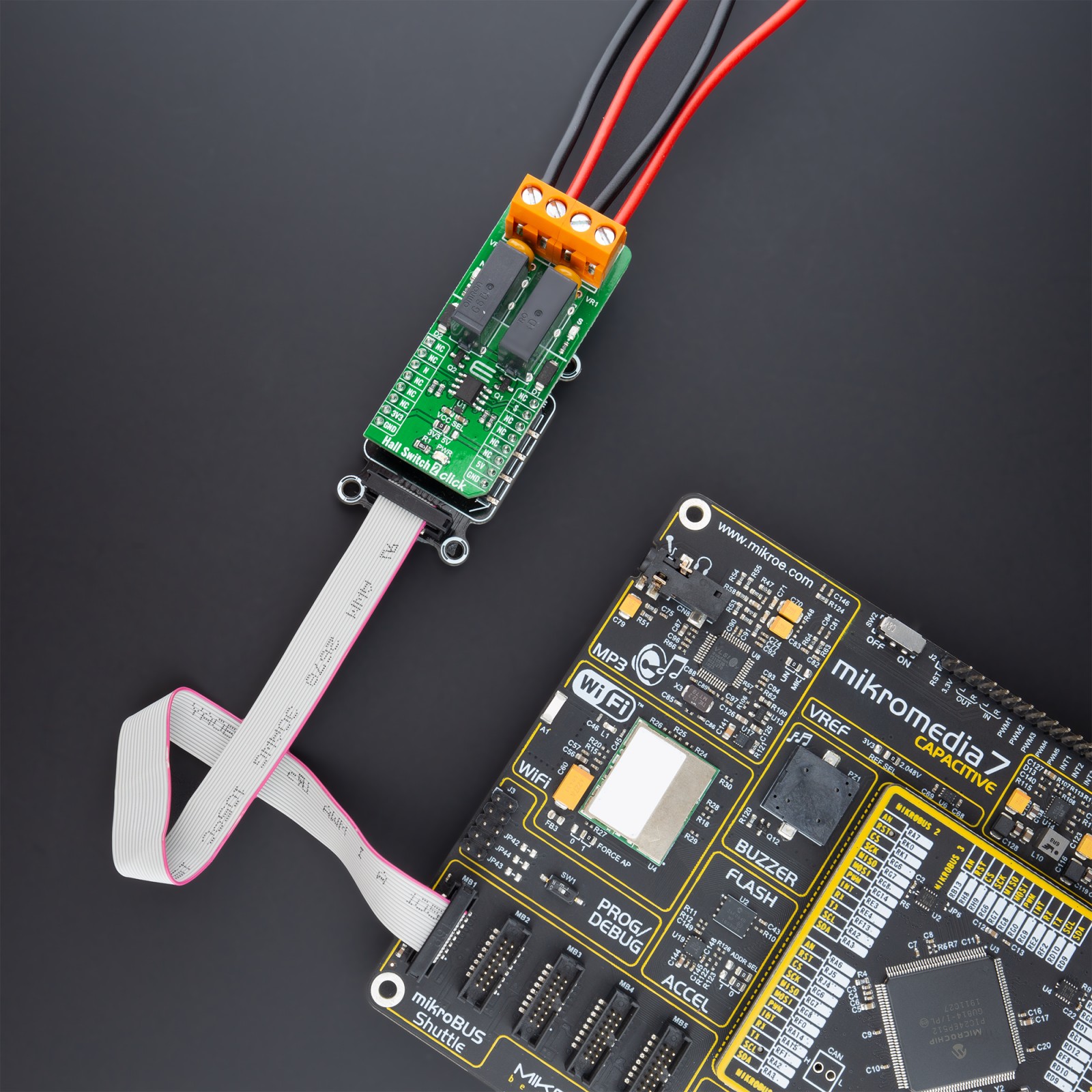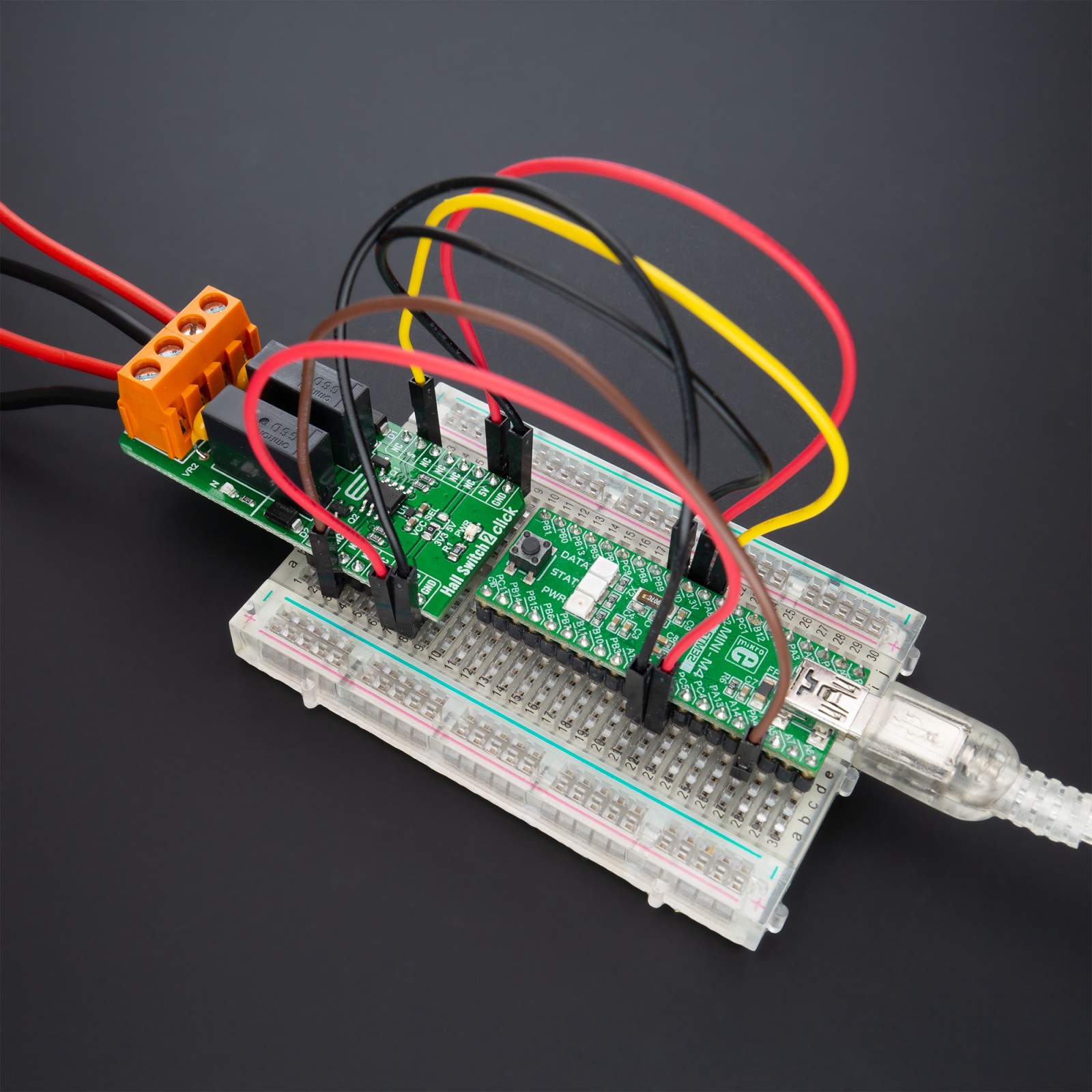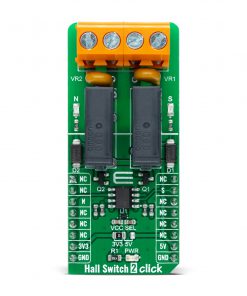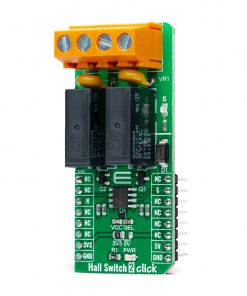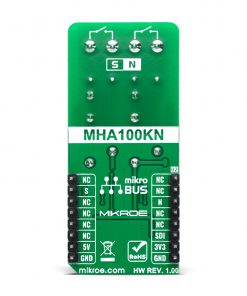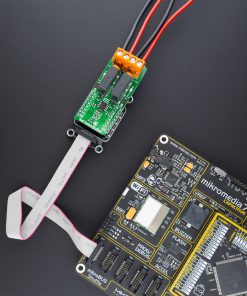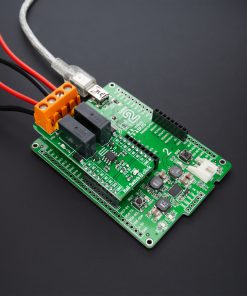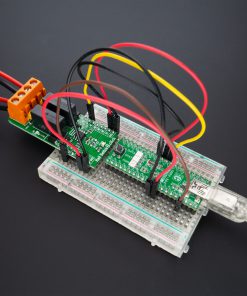Hall Switch 2 Click is a compact add-on board that represents a magnetic field-activated dual-relay Click board™. This board features the MHA100KN, a high-performance, low-power Hall-Effect sensor from MEMSIC. This Hall switch is a fully integrated CMOS IC that outputs a high-low signal following magnetic field changing. It works with a magnet and detects the magnet’s close/away position. Two high-quality compact relays allow switching of high voltages and can cut or establish a connection on the main side of the circuit. This Click board™ is suitable for various applications activated by the magnetic field, such as contactless switches, lids or tray position detecting switches, or other similar applications that require contactless switching of the relay contacts.
Hall Switch 2 Click is supported by a mikroSDK compliant library, which includes functions that simplify software development. This Click board™ comes as a fully tested product, ready to be used on a system equipped with the mikroBUS™ socket.
 DAC Click
1 × R410.00
DAC Click
1 × R410.00  Proximity Click
1 × R220.00
Proximity Click
1 × R220.00  BUZZ Click
1 × R115.00
BUZZ Click
1 × R115.00  GSM Click
1 × R1,050.00
GSM Click
1 × R1,050.00  GSM-GPS Click
1 × R1,350.00
GSM-GPS Click
1 × R1,350.00 
